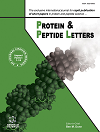
Full text loading...
Autophagy is a self-eating cellular process in which the cell breaks down worn-out organelles, damaged/defective proteins, and toxins. Impaired autophagy is a significant factor in the development of various metabolic disorders, along with oxidative stress, inflammation, mitochondrial and endoplasmic reticulum dysfunction. These disorders pose a significant health and economic burden on the global human population, owing to their steadily rising prevalence. Therefore, modulating the expression of proteins involved in the autophagy-related pathways can be a promising avenue for curbing the development and progression of these disorders. Humanin (HN) is a 24-amino acid mitochondrial-derived peptide. It possesses anti-oxidant, anti-inflammatory, and pro-apoptotic properties. The analogs of HN can be generated by replacing specific amino acids in the polypeptide chain, thereby functionally modifying the peptide. Among these, humanin-glycine (HNG) is the most widely studied analog in both in vivo and in vitro disease models. It is far more potent than HN, with a potency that is 1000 times greater. To the best of our knowledge, this review is the first to discuss and examine the available evidence regarding the potential involvement of HN or its analogs in regulating autophagy pathways. The review primarily highlights that HN is an autophagy inducer, which can promote cell survival in the presence of metabolic and oxidative stress, particularly the HNG analog. Future research is imperative to comprehensively evaluate the effects of HN and its analogs on autophagy. Further investigations are needed to correlate its levels with various autophagic markers in different metabolic diseases, offering the potential for groundbreaking discoveries in understanding disease mechanisms and developing novel therapeutic strategies.

Article metrics loading...

Full text loading...
References


Data & Media loading...

